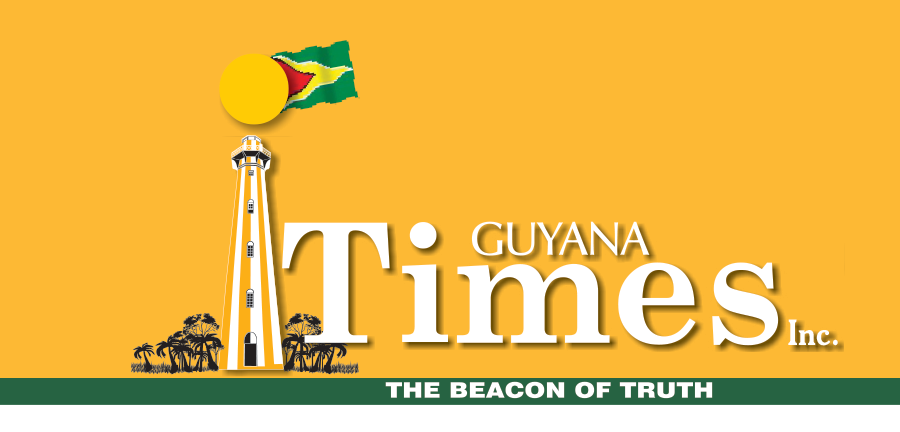Quietly, Guyana is rapidly moving to universal access to potable treated water. It is an unsung success story. President Irfaan Ali is leading the developmental agenda that includes bringing treated water to all Guyanese, with more than $60B already invested since 2020.
But this journey started a long time ago, when President Ali was the Minister of Housing and Water. Today, the journey that took root when President Ali was Minister of Water has become a genuine success story under the ministerial responsibility of the Honourable Collin Croal.
While the team of Minister Croal and Minister Susan Rodrigues have gained recognition for their stewardship of the housing success story, they also deserve commendation for the success story in expanding coverage for treated water.
Amidst the mountain of developmental success stories is the potable water access success story, but it remains one of the most unsung of the important developmental stories taking place in Guyana. Minister Collin Croal this week announced that, by the end of 2025, treated water access would reach 90%.
It is an extraordinary story, given that, in the early 1990s, people had to travel far to fetch water on the coast, and that people in the hinterland had to use creeks and rivers.
When President Bharrat Jagdeo articulated a vision of universal access to treated water, his Minister of Water was Irfaan Ali, now President Irfaan Ali. By 2015, under the then Minister Irfaan Ali, 45% of the population had access to treated water, almost doubling coverage during his tenure as the water minister.
By 2020, treated water became accessible to 54% of the population. Between 2020 and 2025, there has been an accelerated increase in coverage, which is set to reach more than 90% by the end of 2025. It is a phenomenal success story.
When he was Minister of Water, Dr. Irfaan Ali was set to further increase coverage from the 45% at the end of 2014, when he secured funding for three more water treatment plants at Uitvlugt (Region 3), Diamond (Region 4) and Sheet Anchor (Region 6). However, the new PNC-led APNU/AFC Government mismanaged the project, with extensive delays and significant increases in cost. While the APNU/AFC Government were able to commission the Uitvlugt Treatment Plant before they demitted office in 2020, the other two treatment plants were commissioned by the man who started it more than six years before – President Irfaan Ali – when he became president.
Before 2014, the PPP Government had set about to achieve universal coverage for potable water in the hinterland. It had already achieved more than 36% by 2014. By 2020, potable water coverage in the hinterland had reached only 42%, once again because of the sloth by the then APNU/AFC Government. Between 2020 and end of 2025, coverage has grown to close to 90%.
In Region 4, the Hope Canal is being transformed from a purely drainage canal to a potable water reservoir at a cost of more than $7B, and a massive water treatment plant at Bachelor’s Adventure is already 90% completed. There are also upgrades being done in Better Hope, Sparendaam, Friendship, Lusignan, and LBI. A new Water Treatment Plant is presently under construction at Adventure (Region 6), bringing treated water to another 5,000 residents when it is completed in 2026. Expansion and improvement of the water treatment plants in Port Mourant, New Amsterdam, Chesney, Mibicuri, Crabwood Creek, #69 Village, and Johanna (Region 6) will be completed by June 2025. In Region 2, it is expected that, very soon, 100% of the Essequibo Coast would have access to treated water, with the Lima Water Treatment Plant being upgraded, while two new water treatment plants are being constructed in Onderneeming and Maria’s Delight. In 2024, construction of a a new water treatment plant began in Bath (Region 5).
Access to clean water is not just a basic necessity, it is a fundamental human right. For millions living in developing countries and impoverished communities, this essential resource remains a distant dream, overshadowed by the harsh realities of waterborne diseases, environmental degradation, and economic disparities.
In 2010, the UN General Assembly explicitly recognized the human right to water and sanitation. Everyone has the right to sufficient, continuous, safe, acceptable, physically accessible and affordable water for personal and domestic use.
Guyana has already reached its SDG 6.1 target. The SDG target 6.1 calls for universal and equitable access to safe and affordable drinking water. The target is tracked with the indicator of “safely managed drinking water services” – drinking water from an improved water source that is located on premises, available when needed, and free from fecal and priority chemical contamination.
But as Guyana consolidates its achievement in terms of SDG target 6.1, the realities in many developing countries around the world remain bleak. In 2022, over 2.2B people lived without access to safe water, with 1.7 billion people using a drinking water source contaminated with faeces.
Part of the reasons why Guyana made significant gains in reducing child mortality is the increase in access to potable water. Remember, by 1990, more than 2,200 babies under five years old died each year. Today, that number is between 150 and 200 annually. Potable water and treated water save lives.
Consider that about 1M people around the world die each year from diarrhoea as a result of unsafe drinking water, sanitation and hand hygiene.
Any government with an interest in making lives better for people must focus on potable water investment. Like his PPP predecessors, President Irfaan Ali has ensured that the fundamental rights of citizens to clean, safe water is being achieved. As a Minister of Water before 2015, President Ali excelled. He now has another Minister of Water who has followed in his footsteps to ensure Guyana stands out in the world as a developing country that achieved the SDG 6.1 target. Kudos to the Government.
Discover more from Guyana Times
Subscribe to get the latest posts sent to your email.











